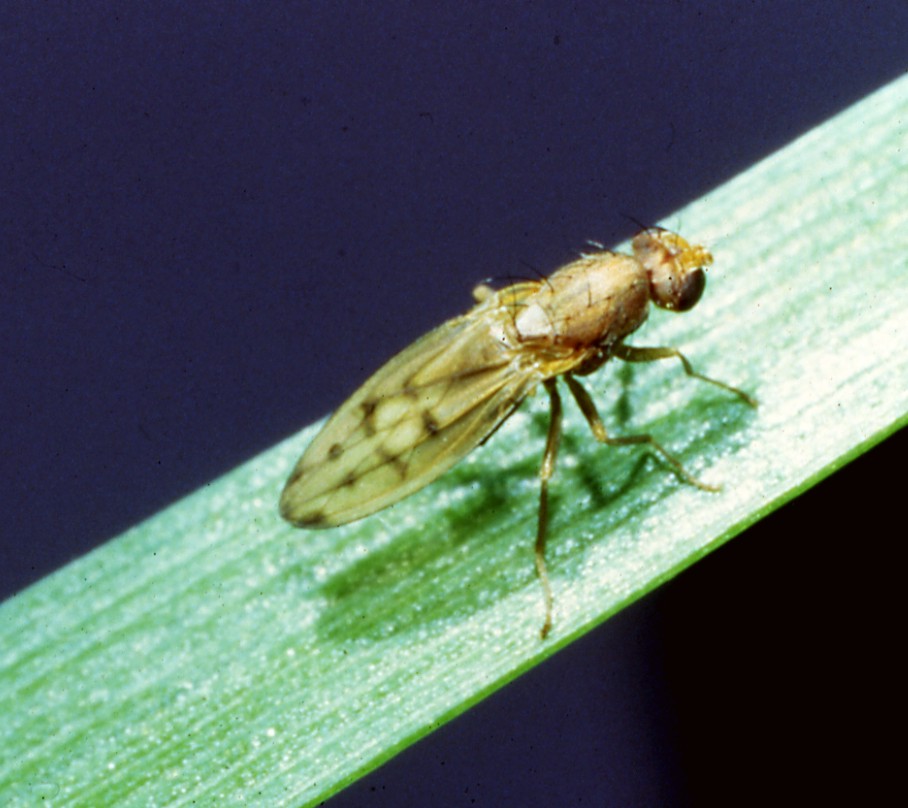Overview of insecticide classification
Chemical composition and origin
- Synthetic - production of chemical pesticides via industrial processes.
- Non-synthetic (natural) - chemicals derived from naturally occurring sources, requiring little/no chemical alteration.
- For example pyrethrins are non-synthetic insecticidal chemicals found naturally in some Chrysanthemum species whilst pyrethroids are synthetically produced compounds derived from chemical alteration of pyrethrins.
Activity
- Residual insecticides – remain effective for longer periods following application. For example, insecticides applied to soil are taken up by plants and circulated throughout the plant tissue. This can target insects that contact or ingest the treated plant for an extended time after initial application.
- Non-residual insecticides – works at the point of application and require immediate and direct contact of the insect with the chemical. Also called contact insecticides.
Mode of penetration
- Stomach poisons – enter the target pest via ingestion.
- Fumigants – enter the target pest via the respiratory system.
- Contact poisons – enter target pest via penetration of the body covering.
Mode of action
- Nervous system disruption - the majority of commercial insecticides target the nervous system. Carbamates, pyrethroids, neonicotinoids, avermectins, phenylpyrazoles are some prominent examples of neurotoxic insecticides.
- Other modes of action include those that disrupt: energy production (inhibitors of mitochondrial respiration), cuticle production (chitin synthesis inhibitors), the endocrine system (insect growth regulators), and water homeostasis (desiccants).
Insect life stage
Insecticides can be classified effect based on target life-stage of the insect
- Ovicides – targets insect eggs
- Pupicides – targets pupal development stage
- Larvicides – targets larval development stage
- Adulticides – targets mature adult insects
Specificity
- Broad spectrum – target a wide range of insects.
- Selective – targets a specific group of insects. This can reduce off-target effects on beneficial insects and natural enemies of the pest.
When choosing the insecticide it is key to consider a range of factors including: crop type, pest species, pest ecology, the pest life stage that is causing most damage, non-target effects and compatibility with other products.
Resistance
A major challenge in agriculture is the development of pest resistance to insecticides. This can be both behavioural (pest becomes able to avoid lethal exposure to the insecticides by changing its behaviour) or physiological (modification of body mechanisms such as thicker cuticles to reduce penetration of the herbicide, modifications of the DNA sequence at the pesticide target site that make the pesticide ineffective, and the ability to detoxify the insecticide)
You can find out more about insecticide resistance and management at The Insecticide Resistance Action Group (IRAG) site.
Some alternatives to synthetic insecticides
Biopesticides - derived from naturally occurring sources that can be formulated/applied similarly to conventional insecticides. Includes microbials as active ingredients (e.g fungi, viruses, bacteria) and biochemicals (e.g plant secondary metabolites, insect pheromones). Genetically modified plants engineered with anti-pest genes from natural sources are also a form of biopesticide but are not currently grown in the UK.
Biocontrol - method of releasing live natural enemies, parasitoids or competitors of the target pest. Tends to form a longer-term management plan.
Sterile insect technique (SIT) - an alternative form of biocontrol. Rather than using additional species it involves the mass-rearing of sterilised insects of the target pest species. These are then released into populations. By remaining sexually competitive but infertile no offspring can be produced when they mate. This can lower pest populations. Success highly dependent on ecology and life cycle of the pest.
Traps - work primarily by attracting and then trapping target pests. Also useful for monitoring insect populations.
Cultural methods - have the goal of making the environment around crops and livestock less suitable for pest growth and spread. Includes a range of strategies including choosing resistant plant/livestock varieties, physical barriers, changing crop planting in both time and space. Note that some methods control certain species but not others so always be aware of the target pest.
Many of these strategies can be combined as part of an Integrated pest management scheme.
Click the 'Ask to Join' button if you would like to modify/add to the content of this topic and recommend useful resources, organisations, networks and projects.





Discussion
Can we farm without insecticides?